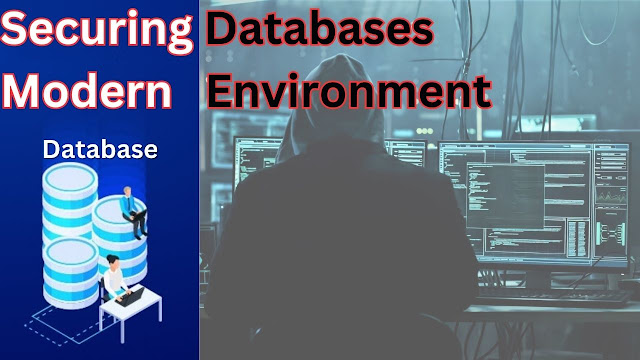Databases, which form the basis of all digital activities in today's world, are rapidly coming under assault from hostile actors on the internet. Databases serve as the foundation for all digital operations. There is a possibility that these assaults will target databases that are housed either on-premises or in the cloud. It is imperative that we reassess our security measures and continue to make improvements in this area since the nature and sophistication of cyberattacks continue to advance at an alarming rate. An all-encompassing strategy that is specifically designed for databases that may be hosted either on-premises or in the cloud is presented here in light of the complicated nature of the current climate around cybersecurity.
1. Adaptive Backup Protocols
Backups are your safety net in the event that anything catastrophic happens online.
Diversify the backup destinations for on-premises systems by using both local and remote storage. When dealing with cloud settings, it is best to choose cloud backup services that cover many regions to provide geographical redundancy.
2. Commit to Continuous Updates and Patching
Cybercriminals exploit outdated software.
Consistently review and apply patches for database software, irrespective of its hosting type. Use automated patch managers to ensure timely updates, and consider subscribing to software update notifications.
3. Dynamic Database Activity Monitoring
A vigilant eye can detect and prevent unsolicited actions.
Deploy AI-powered monitoring tools that not only track but also predict unusual patterns. These tools should adapt to evolving threat patterns and provide real-time alerts.
4. Granular Access Control Mechanisms
Fewer legitimate access points mean fewer unauthorized ones.
Segregate user roles with precision. In cloud environments, integrate with advanced IAM systems provided by cloud service vendors, ensuring dynamic permission adjustments.
5. Comprehensive Encryption Techniques
Encrypted data remains a puzzle to unauthorized viewers.
Adopt end-to-end encryption, encompassing data at rest, in transit, and during processing. Consider adopting quantum-safe encryption methods, especially for critically sensitive data.
6. Advanced Firewall and IDS Deployments
Firewalls and IDS form the digital moats and walls against external threats.
For on-site setups, consider next-gen firewalls with deep packet inspection. For cloud databases, utilize cloud-native security solutions equipped with behavior-based threat detection.
7. Periodic and Thorough Security Audits
Audits are like health checks for your database's security posture.
Engage with cybersecurity firms specializing in modern threat landscapes for both on-premises and cloud environments. Ensure audits scrutinize API interactions, especially in cloud setups.
8. Continuous Staff Training in Cyber Hygiene
A well-equipped team minimizes inadvertent security loopholes.
Prioritize cybersecurity drills, simulating real-life cyber-attack scenarios. For cloud environments, focus on best practices like zero-trust models and secure API integrations.
Organize regular training sessions highlighting the nuances of DDoS attacks. Educate them about recognizing potential threats and the protocols for reporting the same.
9. Multi-layered Authentication Procedures
MFA ensures that breached credentials alone won't compromise the system.
Integrate biometric-based MFA for heightened security levels. For cloud users, explore MFA options that work in tandem with federated identity systems.
10. Forward-Thinking Threat Intelligence
Staying a step ahead in the cybersecurity game is pivotal.
Embed threat-hunting practices, leveraging machine learning to predict emerging threats. Partner with cybersecurity consortiums for real-time threat intelligence sharing.
11. Embrace DDoS Mitigation Services
Think of it as an external shield deflecting DDoS projectiles.
Collaborate with third-party services specializing in DDoS mitigation. Their modus operandi involves absorbing the malicious traffic, ensuring your database remains unaffected and operational.
12. Elevate Defenses with a Web Application Firewall (WAF)
WAFs are tailored guards for web applications, a frequent DDoS target.
Choose a robust WAF solution, ensuring it's updated frequently to fend off evolving DDoS strategies. Ensure seamless integration with your existing infrastructure, whether on-premises or cloud.
13. Migrate to Cloud-based Infrastructure
The cloud's elasticity can outpace a DDoS attack's intensity.
Opt for cloud providers with a proven track record against DDoS threats. Their ability to swiftly scale resources can stymie an attack, preventing prolonged downtime.
14. Develop and Refine a DDoS Response Plan
Preparedness can cut response times, minimizing potential damage.
Construct a meticulous plan detailing identification, mitigation, and recovery stages. Regularly revisit and refine this strategy, conducting mock drills to ensure organizational readiness.
15. Keep a Watchful Eye: Monitor Network Traffic
Early detection can significantly blunt an attack's impact.
Deploy advanced traffic monitoring tools. These platforms should offer real-time analysis, allowing swift mitigation of unusual spikes indicative of DDoS threats.
16. Simulate to Understand: Using DDoS Attack Simulators
Knowing your vulnerabilities beforehand can be enlightening.
Integrate DDoS simulation tools into your cybersecurity arsenal. Regularly scheduled simulations can unearth vulnerabilities, granting time to patch them proactively.
17. Remain Informed: Track Evolving DDoS Trends
Adapting to contemporary threats keeps defenses relevant.
Subscribe to cybersecurity forums, research publications, and threat intelligence networks. Staying updated ensures that your defenses evolve parallelly with emerging DDoS strategies.
Conclusion
In a world that is becoming more digital, databases, which are vital repositories of information, face a good chance of being extensively targeted. companies are able to strengthen their defensive lines and ensure that their databases not only survive the ever-evolving onslaughts of cyber criminals, but also prosper as a result of those onslaughts by combining standard security procedures with cutting-edge techniques that are adapted to on-premises or cloud settings. This is how companies may reinforce their defense lines.
Read more: Zero Trust The Go-To Guide for Online Safety
Read more: Managed File Transfer (MFT) A Game Changer in Secure Data Exchange




.jpg)

0 Comments